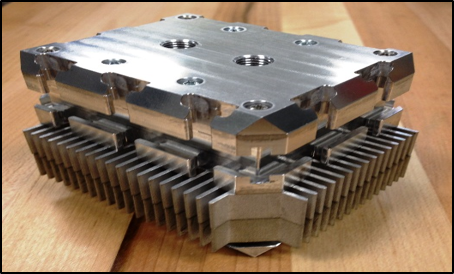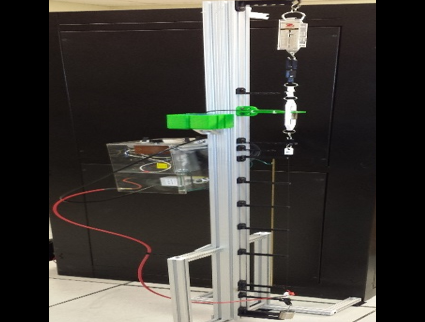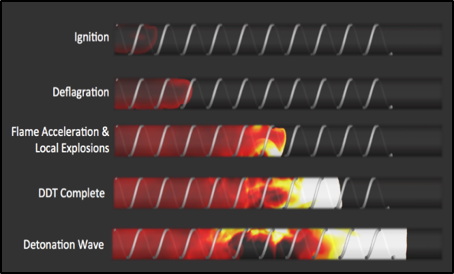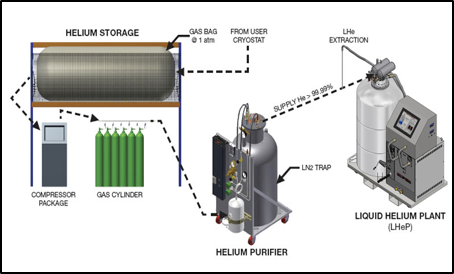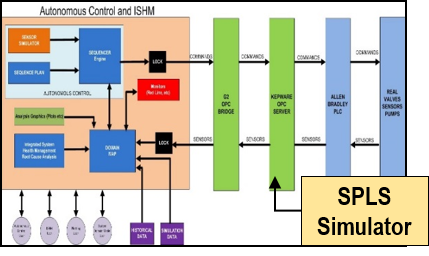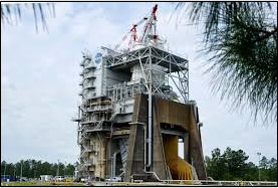Metamaterial Energy Harvesting Demo
Deployable Thermoelectric Metamaterial Energy Harvesting Monitoring System
PM: Scott Jensen |
Fiscal Year: 2015 |
Status: Completed |
This project focused on taking a prototype energy harvester and making it available
for use within the harsh explosive environments throughout the Stennis Space Center's
ground propulsion test facilities.
Deployable thermoelectric metamaterial monitoring unit
Non-conventional Locomotion
Realizing Practical Nitinol Locomotion
PM: Scott Jensen |
Fiscal Year: 2015 |
Status: Completed |
The purpose of this project was to construct a lightweight, power efficient, remote control,
miniaturized crawler for retrieving and shelving stored items by utilizing an advanced nitinol
wire locomotion device that incorporates a novel cooling mechanism. This kind of device has
practical applicability for accessing and transporting hardware components used throughout the
ground propulsion test facilities. Nitinol wires are unique nickel-titanium alloys that shorten
in length when heated, and can lift thousands of times their own weight with forces over 50 tons
per square inch.
Nitinol locomotion testing apparatus
Predicting the Boom from Rocket Engine Testing
Development & Validation of Propellant Detonation and Propagation Modeling
PM: Danny Allgood |
Fiscal Year: 2015 |
Status: Completed |
Testing of chemical rocket propulsion systems involves the potential for high-energy explosions
due to the delayed ignition of propellant flows. The ability to predict these blast environments
is critical to the safety of the test/launch facility. The technology developed and demonstrated
in this project provides a validated engineering tool and methodologies to be used by NASA centers
for predicting potential propellant detonation events during rocket testing or launch programs.
Furthermore, this project enabled a stronger foundational understanding of the necessary finite-rate
chemistry models to accurately predict high-speed deflagrations, deflagration-to-detonation transition,
as well as two-phase cryogenic propellant detonations.
3D deflagration-to-detonation-transition event caused by spiral geometry inside a pulse detonation engine during testing at SSC
Large Propellant Tank Cryo-Cooler Concept
Large Propellant Tank Cryo-Cooler Demonstration (LPTC)
PM: Jody Woods |
Fiscal Year: 2015 |
Status: Incomplete |
The focus of this project was to develop a design concept that utilizes off the grid electricity or solar energy
to power scalable commercially off-the-shelf cryogenic-cooler technology required for test and launch facility
cryo-storage tanks. The LPTC is a system that uses either electricity or solar energy to drive a heat engine
that continuously removes the heat that naturally leaks into a cryogenic propellant storage tank from its ambient
environment. If developed this technology would have saved money associated with the operation, maintenance and
ground operations of launch facilities.
Large propellant cryo-cooler concept
Monitoring the Health of Critical Systems
Gas House Autonomous System Monitoring
PM: Fernando Figueroa |
Fiscal Year: 2015 |
Status: Completed |
The objective of this project was to develop an autonomous monitoring system capable
of assessing the condition of every element in the system, continuously and
comprehensively. The Gas House Autonomous System Monitoring (GHASM) is an intelligent
knowledge based system drawing inferences and conclusions on the state of system elements
i.e., sensors, valves. GHASM will be integrated across systems and subsystems to implement
functional capabilities of an Integrated System Health Management. These capabilities
include (1) anomaly detection, (2) diagnostics, (3) prognostics, and (4) user interfaces to
provide the operator with an integrated awareness about the system's health.
GHASM - autonomous control process
Knowledge is Power
Robust Test Stand Operations through Next-Gen Real-time Analysis of Operations Anomalies
PM: Harry Ryan |
Fiscal Year: 2015 |
Status: Complete |
The intent of this project was to develop a revolutionary rocket propulsion test operations
analysis environment that expanded the scope and depth of critical knowledge available for
operations performance definition, health management, and diagnostics. The project was going
to integrate existing, standalone system analysis models with a proprietary integrated system
health management platform from Model Software Corporation (MSC) which was designed to substantially
minimize the system development expense, maintenance costs and significantly expand the situational
awareness and real-time diagnostics potential. Unfortunately MSC, the commercial partner in this
project, was unable to integrate NASA's test program with its own proprietary software to develop
a response database in a simulated real-time environment.
Robust test stand project attempted to improve operations at the A-1 test stand
